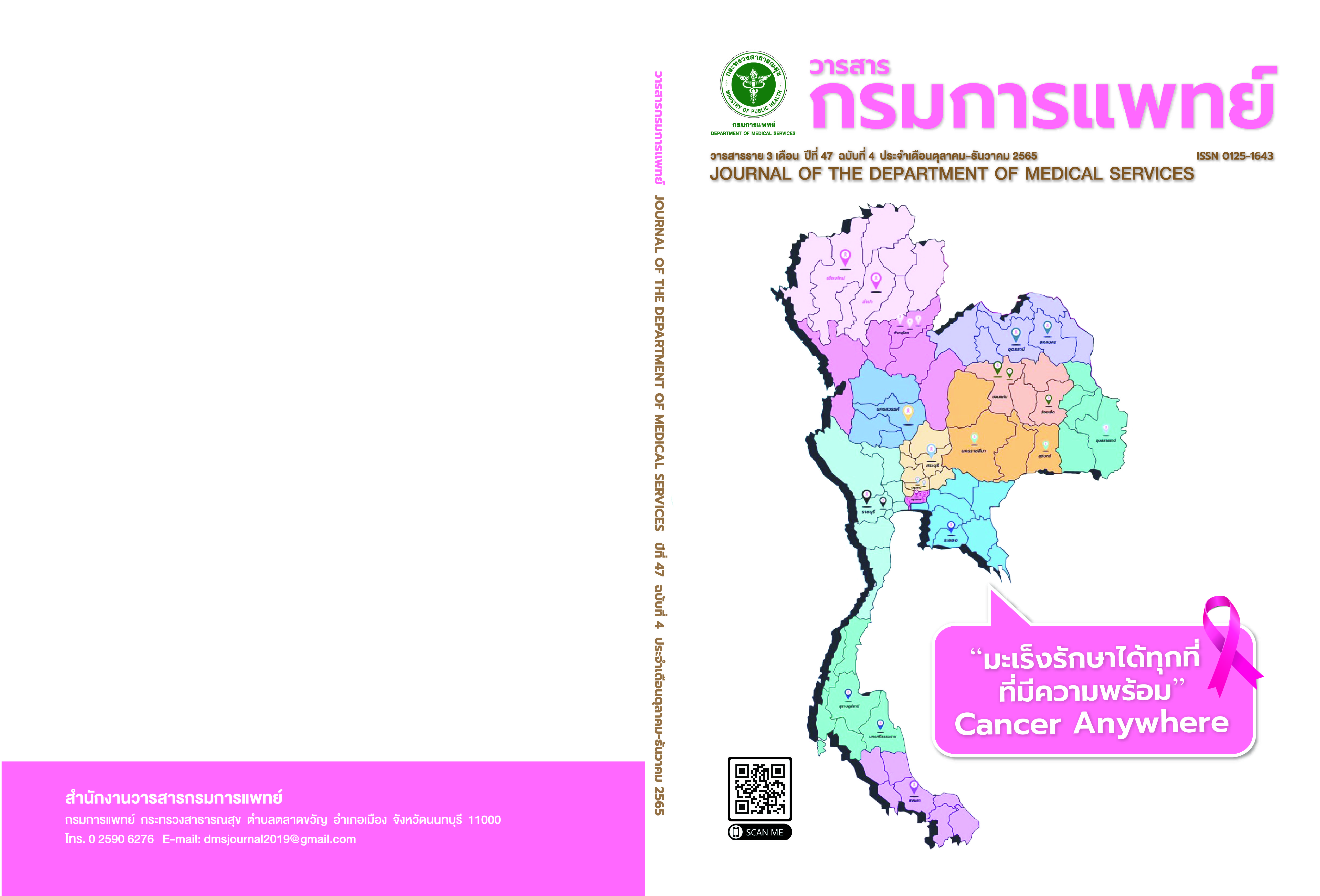Shear Bond Strength of Relining Materials Bonded to 3D Printed Provisional Crown Material
Keywords:
3D printed provisional crown, polymethyl methacrylate, bis-acryl, shear bond strengthAbstract
Background: The availability of 3D printing technology provides an alternative option for fabricating aprovisional crown. A strong bond between the 3D printed provisional crown and the relining materials is significant forsuccess; however, there is limited information on the materials of choice regarding relining the 3D printed provisionalcrown. Objectives: This study aimed to evaluate the shear bond strength between the 3D printed provisional resinand different types of relining materials. Method: The specimens were divided into 3 groups (n = 15) according tothe relining materials; Group 1 (control group): Heat polymerized polymethyl methacrylate (PMMA) bonded withautopolymerizing PMMA, Group 2: 3D printed provisional resin bonded with PMMA, Group 3: 3D printed provisionalresin bonded with autopolymerizing bis-acryl composite. The surfaces were treated with silicon carbide paper. Thespecimens were then exposed to 2500 cycles of thermal cycling. The shear bond strength was measured via a universaltesting machine. A statistical analysis was done using one-way ANOVA test and Bonferroni at the significance levelof 0.05. Result: The group with heat-polymerized PMMA bonded with autopolymerizing PMMA showed the highestmean of shear bond strength (15.48 MPa). There were no statistically significant differences between autopolymerizingPMMA and bis-acryl composite bonded to the 3D printed provisional resin (10.38 and 11.08 MPa, respectively). Conclusion: There are no differences between autopolymerizing polymethyl methacrylate and bis-acryl compositebonded to the 3D printed provisional crown.
References
Burns DR, Beck DA, Nelson SK. A review of selected dentalliterature on contemporary provisional fxed prosthodontictreatment: report of the Committee on Research in FixedProsthodontics of the Academy of Fixed Prosthodontics. JProsthet Dent. 2003; 90:474-97.
Abduo J, Lyons K, Bennamoun M. Trends in computer-aidedmanufacturing in prosthodontics: a review of the availablestreams. Int J Dent. 2014; 2014:783948.
Beuer F, Schweiger J, Edelhoff D. Digital dentistry: an overviewof recent developments for CAD/CAM generated restorations.Br Dent J. 2008; 204:505-11.
Revilla-León M, Meyers MJ, Zandinejad A, Özcan M. A reviewon chemical composition, mechanical properties, andmanufacturing work flow of additively manufactured currentpolymers for interim dental restorations. J Esthet Restor Dent.2019; 31:51-7.
Rosenstiel SF, Land MF, Fujimoto J. Contemporary fxedprosthodontics. 5th ed. St. Louis, Missouri: Elsevier; 2016.
Chen HL, Lai YL, Chou IC, Hu CJ, Lee SY. Shear bond strengthof provisional restoration materials repaired with light-curedresins. Oper Dent. 2008; 33:508-15.
Patras M, Naka O, Doukoudakis S, Pissiotis A. Management ofprovisional restorations’ defciencies: a literature review. J EsthetRestor Dent. 2012; 24:26-38.
Lim NK, Shin SY. Bonding of conventional provisional resin to 3Dprinted resin: the role of surface treatments and type of repairresins. J Adv Prosthodont. 2020; 12:322-8.
Revilla-León M, Sadeghpour M, Özcan M. An update onapplications of 3D printing technologies used for processingpolymers used in implant dentistry. Odontology. 2020; 108:331-8.
Baroudi K, Rodrigues JC. Flowable Resin Composites: ASystematic Review and Clinical Considerations. J Clin Diagn Res.2015; 9:Ze18-24.
Albahri R, Yoon H-I, Lee JD, Yoon S, Lee SJ. Shear bond strengthof provisional repair materials bonded to 3D printed resin.Journal of Dental Sciences. 2021; 16:261-7.
Jeong K-W, Kim S-H. Influence of surface treatments and repairmaterials on the shear bond strength of CAD/CAM provisionalrestorations. J Adv Prosthodont. 2019;11:95-104.
Lee J, Lee S. Evaluation of add-on methods for bis-acrylcomposite resin interim restorations. J Prosthet Dent. 2015;114:594-601.
Umaporn V, Apittita T, Kitinun T, Rus-ake T, Waritta M, Winwan V,et al. Effect of Surface Treatments on Microtensile Bond Strengthof Bis-acryl Resin Provisional Restoration and Self-Curing AcrylicResin. J DENT ASSOC THAI 2018;68.
Minami H, Suzuki S, Minesaki Y, Kurashige H, Tanaka T. In vitroevaluation of the influence of repairing condition of denturebase resin on the bonding of autopolymerizing resins. J ProsthetDent. 2004; 91:164-70.
Braga RR, Meira JB, Boaro LC, Xavier TA. Adhesion to toothstructure: a critical review of “macro” test methods. Dent Mater.2010; 26:e38-49.
Rasmussen ST. Analysis of dental shear bond strength tests, shearor tensile? International Journal of Adhesion and Adhesives.1996; 16:147-54.
Downloads
Published
How to Cite
Issue
Section
License
Copyright (c) 2022 Department of Medical Services, Ministry of Public Health

This work is licensed under a Creative Commons Attribution-NonCommercial-NoDerivatives 4.0 International License.
บทความที่ได้รับการตีพิมพ์เป็นลิขสิทธิ์ของกรมการแพทย์ กระทรวงสาธารณสุข
ข้อความและข้อคิดเห็นต่างๆ เป็นของผู้เขียนบทความ ไม่ใช่ความเห็นของกองบรรณาธิการหรือของวารสารกรมการแพทย์



